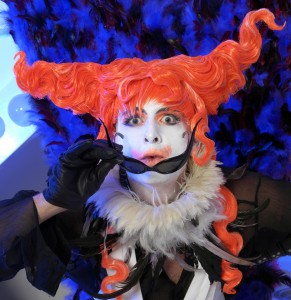How charities use celebrities in PR campaigns
About the author
Our guest authors are what make PR Place such a vibrant hub of information, exploration and learning.

This is an article by Selwyn Jerry Boston.
Many charities use celebrities to promote their campaigns. There are many celebrities involved in charitable work whether as patrons or spokespeople, but why is this?
When celebrities become spokespersons for a charity they can use their fame to increase public awareness for the issue and make a bigger difference than if you or I made the same speech. They add momentum to the cause in a way that ordinary people usually can’t.
The book Exploring Public Relations attributes the effectiveness of celebrity endorsement to ‘credibility’ and ‘attention’. The book goes on to say that celebrities can attract attention and this is the most vital ingredient of success in a world saturated with so much noise generated by media messages.
If celebrities are fully informed and engaged with the cause they are promoting, the message can greatly influence the process persuading people to support the cause.
Cognitive dissonance in action
PR Week recently published the results of a survey by nfpSynergy on the value of celebrity endorsement in the voluntary sector. The survey cited that young people tend to be less influenced by celebrity campaigns as they grow older. Does this mean that charities need to choose the right personality to encourage support from their target audiences?
PR practitioners have to be prepared to manage the image and reputation of the organisation to key audiences if things do not go to plan when using a celebrity as part of a PR campaign.
For example, Naomi Campbell caused controversy by wearing fur in 1997, not long after she had been all over billboards and magazines in People for the Ethical Treatment of Animals’ eye-catching ‘I’d rather go naked than wear fur’ campaign, even appearing on US television as a spokesperson for the organisation. The excuse from her model agency spokesperson pointed out that she “only signed up for the one anti-fur campaign.”
For some famous faces, charity endorsement is just another form of self-promotion. High profile endorsers can bring a certain element of clout to a campaign, but the most important thing PR practitioners must remember is that the celebrity’s values must match the ethos of the charity they have been asked to support.
When it works, it works
A high-impact PR campaign can be enhanced by collaborations with a well-known face to a good cause.
In 2009, Joanna Lumley was invited to become an ambassador for the Child Welfare Scheme a children’s charity that works with disadvantaged children and communities in Nepal. Her continued support in fighting for the settlement of the Gurkha veterans in the UK demonstrates her unselfish passion for wanting to make a positive difference to the lives and future of others was noticed by the charity and because of her links with the country she was an obvious option.
The use of famous personalities remains a primary tactic that major charities use to send their messages out to their audiences. Charities are getting better at matching their cause with a famous face who thinks about the issues, but also wants to help. The role of a celebrity in philanthropy, good causes and international progress really gets some asking the question – why use them when so many of them do are not fully engaged in the causes they support?
Case study: The Wig Party and National Aids Trust (NAT)
The Wig Party is a private annual charity event, organised by a voluntary group of entrepreneurs and friends raised approximately £45,000 for NAT last year.
As the UK’s leading charity dedicated to changing the public attitude to HIV, NAT provides fresh thinking, expert advice and practical resources to people living with HIV trough to the Government. As the event increased in size each year, the committee had to seek out sponsors and patrons to increase the publicity of the charity and its cause and will get in return including logo placement, top billing, naming rights and perks such as VIP tickets allocated to the brand or personality name.
All celebrities, sponsors and partners were met through personal contacts of the committee members. The event was pitched to potential sponsors a couple of times before they got financially involved. NAT’s chief executive, Deborah Jack stated: “Partnering with such a high profile event will help raise awareness of HIV at a time when it’s fallen off the public and media agenda.”
Aims and Objectives
- To grow into an international fundraising charity.
- To improve public understanding and awareness of HIV.
- To increase fundraising targets by 5% each year.
Celebrity Patrons
Leona Lewis / Keisha Buchanan / Dannii Minogue / Jeremy Sheffield / Jason Gardiner / Ben De Lisi / Beverly Knight / Ben Cooke / Lisa Butcher / Tim Vincent / Jasper Conran / Patrick Cox / Benjamin Hart / Gail Porter / Louie Spence
Sponsors and Partners
MAC / DIAGEO / JITROIS / L’OREAL / SELFRIDGES / SWAROVSKI / D-SQUARED
Results
The tickets sold out a week before the event due to the efforts of every committee member’s use of their Facebook profile as a tool to promote the event. Through out the build up to the event, the PR team used specific print, online and social media as channels of communication to its target audience. The Wig Party’s Facebook page was used as way of getting information and updates out, and as a channel of two-way communication with the public.
Coverage spanned from editorials to competitions in weekly publications such as Time Out, QX and Boyz magazines featuring the main host of the event Wiggy Woo, to being highlighted on national television. The Wig Party was featured on Louie Spence’s fabulous “Show Business” programme on Sky 1 HD on Wednesday 2nd March, 2011.